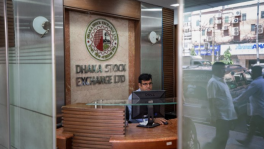What the World looks like after a month of pandemic
On March 11, the World Health Organization gave the spread of a novel coronavirus a name. Nothing has been the same since.
On March 11, the World Health Organization labeled the spread of a novel coronavirus across the globe a "pandemic." The designation, meaning simply that the highly contagious disease had expanded throughout a wide geographic area, came as much of the world was beginning to recognize the deadly threat posed by the pathogen.
It was December 31 when the international health agency said it was notified that cases of pneumonia with an unknown cause had been detected in Wuhan, a city in China's Hubei province. By Jan. 3, a total of 44 patients had been reported by Chinese authorities, the organization said. By early March, the virus had spread to every continent save Antarctica, with 118,000 cases and more than 4,000 deaths.
Today, the pandemic has sickened more than 1.6 million people and killed almost 100,000. Many parts of the world have come to a standstill as governments struggle to slow the virus's spread. As a result, the global economy has dangerously slowed. Millions of people have lost their jobs, shutting themselves inside their homes as they wait for the scourge to recede. Once bustling streets, avenues and highways in cities all over the globe are empty. In many places, commerce has simply stopped.

Los Angeles
Milan
Sao Paulo
Moscow
Jerusalem
Istanbul
London
Toronto
Madrid
Mumbai
Lisbon
Disclaimer: This article first appeared on Bloomberg.com, and is published by special syndication arrangement."
 Keep updated, follow The Business Standard's Google news channel
Keep updated, follow The Business Standard's Google news channel














